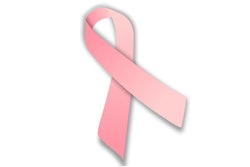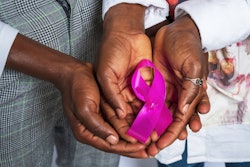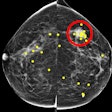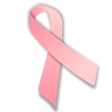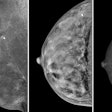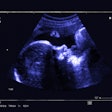Overall breast cancer mortality continues to decline, but racial and ethnic disparities persist in mortality and incidence rates, according to an October 1 report from the American Cancer Society (ACS).
A team led by Angela Giaquinto from the ACS found that while advances in breast cancer screening and treatment have led to over half a million lives being saved over the past three decades, these advances have not been distributed equally. Women who identify as American Indian/Alaska Native have experienced no reduction in mortality, and Black women have higher mortality than white women despite lower incidence.
“Disparities in breast cancer mortality may be mitigated by increasing access to high-quality screening and treatment, especially among Black and Native American women, and increasing diversity in clinical trials,” Giaquinto told AuntMinnie.com.
Breast cancer remains the second leading cause of death among women and the leading cause of death among Black and Hispanic women. The ACS noted that rising cancer incidence rates and the temporary closure of facilities due to the COVID-19 pandemic may contribute to long-term consequences.
The researchers provided ACS' biennial update of breast cancer statistics among U.S. women to outline estimated numbers of new cases and deaths in 2024 by age, incidence and mortality rates and trends, and other measures.
The team included population‐based cancer incidence data from the National Cancer Institute's (NCI's) Surveillance, Epidemiology, and End Results (SEER) program and the Centers for Disease Control and Prevention's National Program of Cancer Registries.
The investigators found the following regarding breast cancer incidence:
- Breast cancer incidence rose by 1% annually from 2012 to 2021, mostly confined to localized‐stage and hormone receptor‐positive disease.
- Women younger than 50 years experienced a 1.4% annual increase in incidence compared with 0.7% seen in older women, though this was only significant among white women.
- Asian American/Pacific Islander women had the fastest increase in both under-50 and over-50 age groups (2.7% and 2.5% per year, respectively).
- Young Asian American/Pacific Islander women had the second lowest incidence rate in 2000 (57.4 per 100,000) but the highest rate in 2021 (86.3 per 100,000) alongside white women (86.4 per 100,000). This also surpassed Black women (81.5 per 100,000).
The overall breast cancer death rate continuously declined between 1989 and 2022 by 44%. This translates to 517,900 fewer breast cancer deaths during this time.
However, this progress varies by subgroup, with mortality remaining unchanged since 1990 in American Indian/Alaska Native women. Meanwhile, Black women have 38% higher mortality than white women despite a 5% lower incidence.
Finally, Black women have the lowest survival for every breast cancer subtype and stage except localized disease and are 10% less likely to be diagnosed than white women (58% vs. 68%).
Giaquinto said that the overall increased incidence may be attributed to changing risk factors across the population, such as increasing excessive weight and declines in fertility. She added that early detection should be promoted to all women, but especially those who are less likely to be screened.
“Our research found that women who identify as American Indian or Alaska Native, Asian American, or are uninsured have among the lowest rates of having a mammography in the past one or two years,” Giaquinto told AuntMinnie.com. “Disparities in the data can be lessened if more women, regardless of insurance status, have access to affordable breast cancer screenings.”
She suggested that breast cancer awareness and screening should be especially promoted in communities that experience low use of mammography. Additionally, having culturally appropriate patient navigators can help connect women with convenient screening and timely follow-up for abnormal mammograms, she added.
“Our team will continue to monitor these trends in breast cancer incidence and mortality with future research studying these trends among specific populations, such as younger and non-white women,” Giaquinto said.
The full report can be found in CA: A Cancer Journal for Clinicians.




